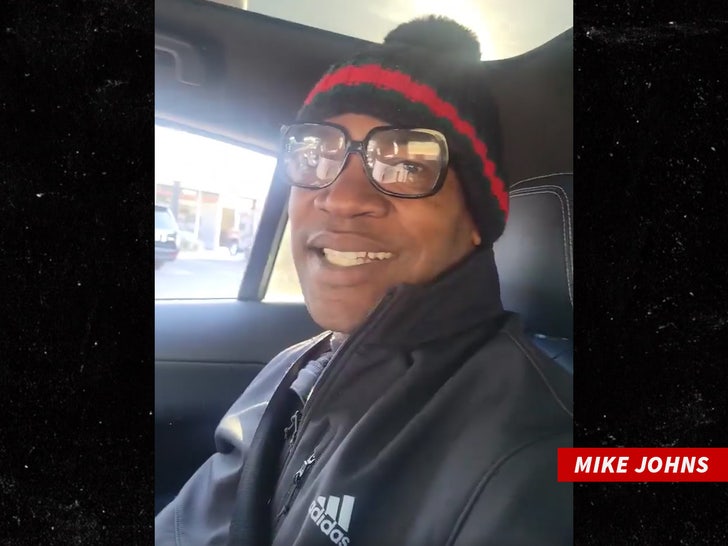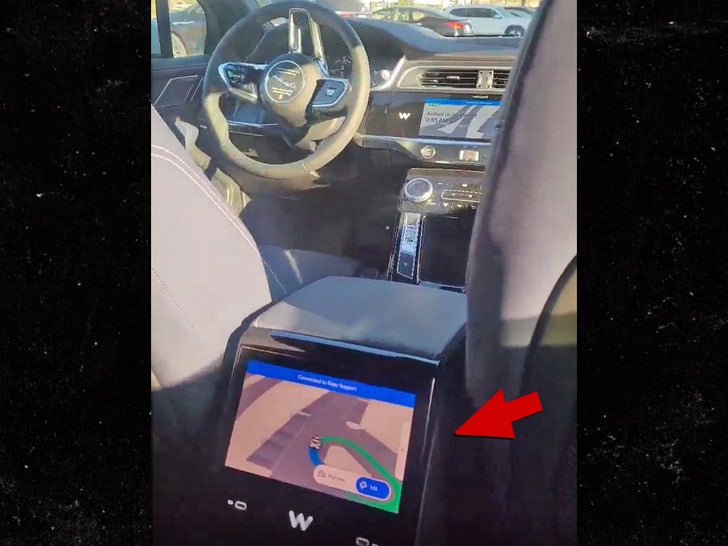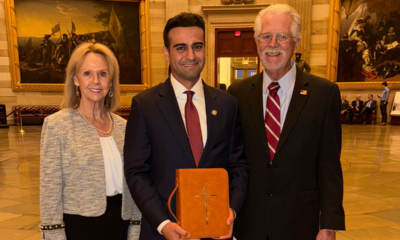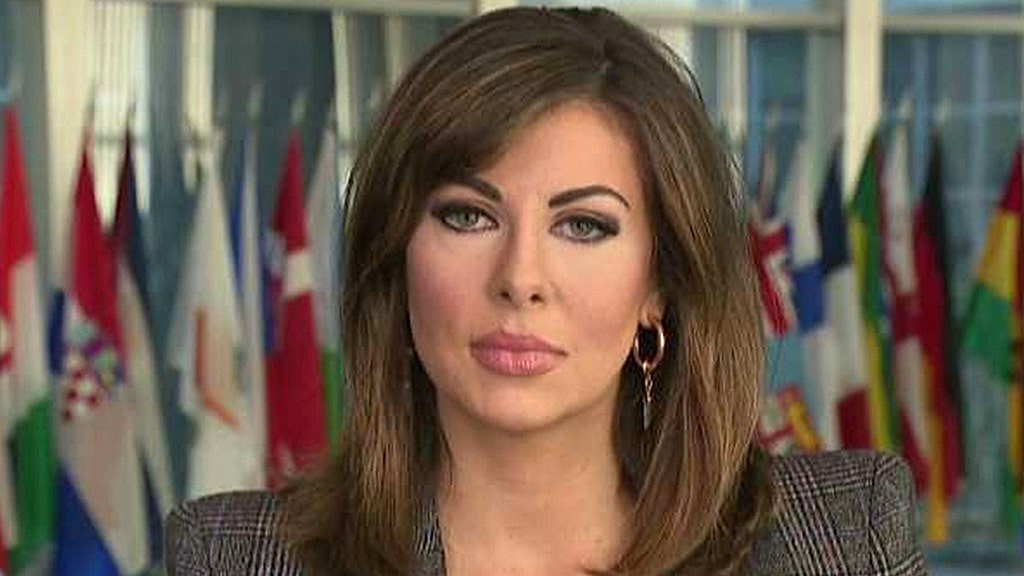Lifestyle
Here's how TikTok creators are preparing for a TikTok ban

TikTok creators are preparing for the app to potentially be shut down in the U.S. this month unless it’s sold to a non-Chinese company.
Dan Kitwood/Getty Images
hide caption
toggle caption
Dan Kitwood/Getty Images
As a TikTok shutdown looms, many creators are preparing for life without the popular social media app that serves as news, entertainment and for some: income.
TikTok will be banned in the U.S. this month unless its owner, ByteDance, is sold to a company outside of China.
President-elect Donald Trump has asked the Supreme Court to block the law from going into effect — and NPR’s Bobby Allyn has reported that “for all the TikTokers out there who use the app every day, I think it’s fair to say it’s unlikely it will be disappearing anytime soon.”
But creators on the app are saying their goodbyes and planning for the app as they know it to go away in a matter of weeks.
For some creators, the end of TikTok would mean losing their main source of income.
Cora Lakey quit her six-figure job in talent acquisition and project management in October — because she was able to make a living on TikTok.
“I was, I would say, equaling my corporate salary for about three months before I took the leap to quit,” Lakey said.
TikTok has allowed her to pay off some of her student debt. Unlike her corporate job, becoming a full-time TikTok creator has also provided her autonomy over how she spends each hour of her day.
But recently she’s seen comments that a TikTok ban might force influencers like her to “get a real job.”
In a TikTok video, she retorted, “Influencers aren’t out of touch for crying about the TikTok ban. You’re out of touch for not realizing this is a real industry.”
Women have the most to lose: Eighty-four percent of influencers are women, according to a 2024 report from Influencer Marketing Hub, which follows the social media industry.
“Some would argue that with TikTok shutting down, they could wipe out about $1.3 billion in U.S. small business and creator revenue within just one month,” said Nicol Turner Lee, senior fellow in governance studies and director of the Center for Technology Innovation at the Brookings Institution.
“The creator economy is valued at $250 billion globally,” Turner Lee added.
President Biden signed the bill that would potentially ban TikTok, citing threats to national security.
The app gathers a lot of personal information from users, and lawmakers say they are concerned about the Chinese government spying on American users, or manipulating the platform to advance its own interests.
But Adam Aleksic, who goes by @etymologynerd on TikTok, doesn’t believe these claims.
“It’s not about China. It’s about the fact that they can’t control mass communication anymore, which has also been obvious since the war in Gaza started,” Aleksic said in a TikTok video.
Aleksic echoes a theme a lot of TikTok users share about the ban.
“The gatekeepers hate this, but they know they can’t stop us from using all of social media,” he said. “Instead, they can just try to limit us to the platforms they have the most control over.”

Among TikTok users, there’s a feeling of loss.
“I’m not as worried as I am disappointed,” said Anna Vatuone, who coaches people on developing their personal brands online.
Vatuone says she finds most of her clients through TikTok. Ahead of a potential ban on the app, she’s telling her hundred and eighty thousand followers to find her on Instagram and Substack.
“Rule one of personal branding is don’t put all your eggs in one basket,” Vatuone said. “Diversify and make sure that you’re in a lot of different places, because the truth is we don’t own our profiles anywhere.”
Ralph Tyndall posts videos about cardmaking to his one-and-a-half million followers. He’s been a full-time content creator for almost two years, and says it allowed him to leave his tech job that burned him out.
“I’ve kind of just been ignoring it, knowing that I don’t really have any control,” he said of a potential TikTok ban.
Tyndall used to make around $160 thousand annually at his tech job, however he now makes more as a content creator. He says he’ll be alright without the additional income from TikTok — but it’s the loss of community he’s more worried about. He’s been on TikTok longer than any other social media platform, and doesn’t want to lose the following he’s built up.
“While it’s great to chase the metrics and numbers and views, the thing that keeps me coming back is the community,” Tyndall said.
Rishika Vinnakota is a TikTok influencer who posts about her life as a college student to her twenty thousand followers. She says she’s “disappointed just because I built a community,” adding that “it’s really hard to get people to follow you from one platform to another, especially if you have a smaller platform.”
Vinnakota has three on-campus jobs, but makes the most of her income from TikTok partnerships and brand deals.
“It’s a little sad to go through and relive all my videos and download them and, you know, plan to post them on another platform,” she added.
Vinnakota uses a separate app to download her videos without the TikTok watermark — since videos posted on TikTok can’t be downloaded without the app’s logo.
While she can upload her TikTok videos to another platform, it won’t be as lucrative. Having a large following on TikTok makes brands want to work with her — and she doesn’t have nearly as many followers on other social media platforms.
“I mean, all of this could have been dealt with in a much better way,” she said of the lawmakers who orchestrated the potential ban.
“I’m still going to take content, film, post, edit. I’m going to do everything I do,” Vinnakota said. “It just might not be on TikTok anymore.”
This story was edited for radio by Barry Gordemer and edited for digital by Treye Green. It was produced by Claire Murashima.

Lifestyle
Britt Allcroft, who brought Thomas the Tank Engine to television, dies at 81

YouTube
Britt Allcroft, creator of the beloved Thomas the Tank Engine & Friends children’s TV series, has died.
The British-born producer died last week in Santa Monica, Calif., at 81.
The death was confirmed by Brannon Carty, the creator of a documentary about Thomas fandom and a friend of the TV producer’s. No cause of death was given.

Thomas started out as a character in a series of books dating back to the 1940s by Rev. Wilbert Awdry, an English Anglican minister and train enthusiast. Awdry’s The Railway Series revolved around a cast of anthropomorphic trains, including Thomas and his friends Gordon, James and Percy, all chuffing along on the imaginary island of Sodor.
But Allcroft made Thomas an international sensation, starting in the mid-1980s with her TV adaptation narrated by Ringo Starr.
The series, which was later renamed Thomas & Friends, ran for more than three decades and featured other famous narrators such as George Carlin and Alec Baldwin. It has spawned TV spin-offs, movies, stage productions and a ton of merch.

Television producer and director Britt Allcroft in 1973.
Express/Getty Images/Hulton Archive
hide caption
toggle caption
Express/Getty Images/Hulton Archive
And the appeal goes beyond kids. The 2023 documentary An Unlikely Fandom is about grownups’ passion for the little blue locomotive.
Filmmaker Brannon Carty — a lifelong Thomas fan — said he got to know Allcroft in her final years.
“She was just an incredible woman who was still a child at heart,” Carty said in an interview with NPR. “But she was a businesswoman at the same time. So, she understood what children wanted, and also knew how to sell it.”
Allcroft was born in 1943 in Worthing, a town on England’s south coast.
Beyond Thomas, her 1990s animated series Magic Adventures of Mumfie, about a sweet little gray elephant and his friends, was a particular hit.
“I wanted to do something very different from Thomas that would be very magical and epic and hopefully have lots of music in it, and would, in the same way as Thomas, help give children love, and security, and inspiration, and comfort, and fun,” Allcroft told NPR in a 2013 interview.
Allcroft also said she aimed to create shows that gave children an antidote to hectic modern life.
“Children, they’re multidimensional,” she said. “And they still like that time where they can be with their stories, be with their characters, and feel that they’re not being pushed.”

Thomas the Tank Engine arrives for Thomas & Friends: A Day Out with Thomas Tour at Strasburg Rail Road Museum in September 2014 in Lancaster County, Pa.
Lisa Lake/Getty Images for HIT Entertainment
hide caption
toggle caption
Lisa Lake/Getty Images for HIT Entertainment

Lifestyle
Waymo Driverless Car Drives Passenger Around In Circles — VIDEO

Here’s a new way to miss a flight … a Waymo passenger says his driverless ride to the airport wouldn’t stop taking him around in circles … and he documented his travel nightmare on video.
Footage shows a man named Mike Johns sitting in the back of his Waymo ride, which won’t stop circling a parking lot.
Mike calls Waymo customer service to report the issue, telling them he’s in danger of missing his flight … but the rep is unable to stop the car in its tracks … and Mike keeps being driven in a circle.
It’s funny … Mike wonders if he’s being pranked, and he says it feels like he’s in a science fiction thriller.

Ultimately, Mike says his Waymo drove him around in 8 circles … and he ended up missing his flight.
Mike claims he’s yet to be reimbursed for the missed flight, ripping Waymo for having no empathy and ignoring him with a customer service division that’s fully automated and run by artificial intelligence.

Sounds like the experience is souring Waymo for Mike … next time he needs a ride, he says he’s going to keep it old-fashioned with a Lyft or Uber.

Waymo — run by Google’s parent company Alphabet Inc. — is still pretty new to the taxi biz … and it’s clear there are still some hiccups to iron out.
Lifestyle
Do You Believe in Life After Death? These Scientists Study It.

Upon arrival at the family’s home, the team was shown into the kitchen. A child, who was three, the youngest of four home-schooled siblings, peeked from behind her mother’s legs, looking up shyly. She wore a baggy Minnie Mouse shirt and went to perch between her grandparents on a banquette, watching everyone take their seats around the dining table.
“Let’s start from the very beginning,” Dr. Tucker said after the paperwork had been signed by Misty, the child’s 28-year-old mother. “It all began with the puzzle piece?”
A few months earlier, mother and child had been looking at a wooden puzzle of the United States, with each state represented by a cartoon of a person or object. Misty’s daughter pointed excitedly at the jagged piece representing Illinois, which had an abstract illustration of Abraham Lincoln.
“That’s Pom,” her daughter exclaimed. “He doesn’t have his hat on.”
This was indeed a drawing of Abraham Lincoln without his hat, but more important, there was no name under the image indicating who he was. Following weeks of endless talk about “Pom” bleeding out after being hurt and being carried to a too-small bed — which the family had started to think could be related to Lincoln’s assassination — they began to consider that their daughter had been present for the historical moment. This was despite the family having no prior belief in reincarnation, nor any particular interest in Lincoln.
On the drive to Amherst, Dr. Tucker confessed his hesitation in taking on this particular case — or any case connected to a famous individual. “If you say your child was Babe Ruth, for example, there would be lots of information online,” he said. “When we get those cases, usually it’s that the parents are into it. Still, it’s all a little strange to be coming out of a three-year-old’s mouth. Now if she had said her daughter was Lincoln, I probably wouldn’t have made the trip.”
Lately, Dr. Tucker has been giving the children picture tests. “Where we think we know the person they’re talking about, we’ll show them a picture from that life, and then show them another picture — a dummy picture — from somewhere else, to see if they can pick out the right one,” he said. “You have to have a few pictures for it to mean anything. I had one where the kid remembered dying in Vietnam. I showed him eight pairs of pictures and a couple of them he didn’t make any choice on, but the others he was six out of six. So, you know, that makes you think. But this girl is so young, that I don’t think we can do that.”
-

 Business1 week ago
Business1 week agoOn a quest for global domination, Chinese EV makers are upending Thailand's auto industry
-

 Health6 days ago
Health6 days agoNew Year life lessons from country star: 'Never forget where you came from'
-
/cdn.vox-cdn.com/uploads/chorus_asset/file/24982514/Quest_3_dock.jpg)
/cdn.vox-cdn.com/uploads/chorus_asset/file/24982514/Quest_3_dock.jpg) Technology6 days ago
Technology6 days agoMeta’s ‘software update issue’ has been breaking Quest headsets for weeks
-

 Business3 days ago
Business3 days agoThese are the top 7 issues facing the struggling restaurant industry in 2025
-

 Politics1 week ago
Politics1 week ago'Politics is bad for business.' Why Disney's Bob Iger is trying to avoid hot buttons
-

 Culture3 days ago
Culture3 days agoThe 25 worst losses in college football history, including Baylor’s 2024 entry at Colorado
-

 News1 week ago
News1 week agoAmerican Airlines lifts ground stop that froze Christmas Eve travelers
-

 World1 week ago
World1 week agoWho is Europe's top investor in space in 2023?
















